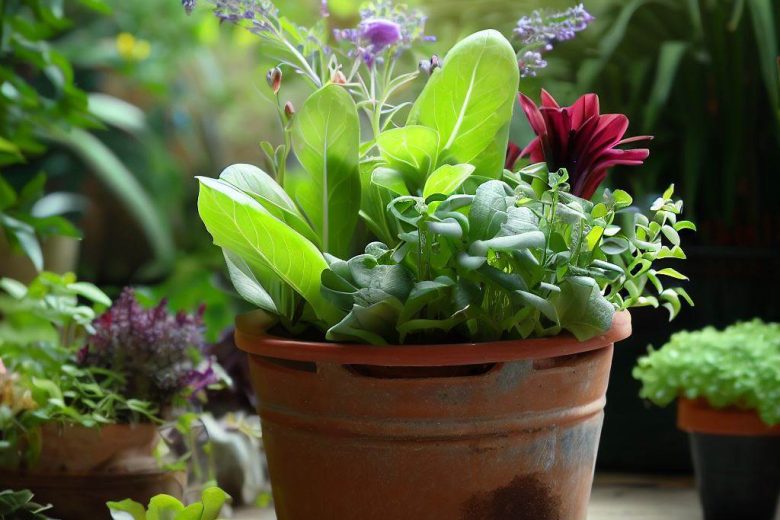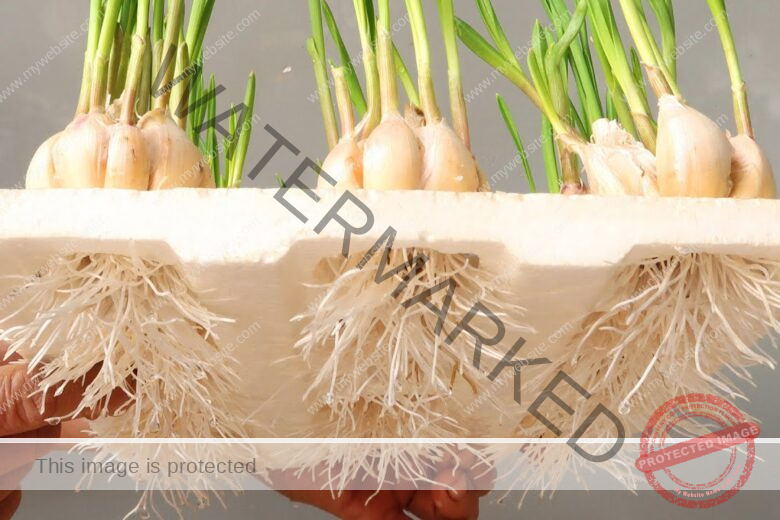Introduction
Aloe plants are a popular choice for both indoor and outdoor gardens due to their striking appearance, resilience, and numerous health benefits. Known for their healing properties, especially in treating burns and skin conditions, aloe vera is one of the easiest succulents to grow. However, while aloe is relatively low-maintenance, providing the right nutrients at the right time is essential for healthy growth. Fertilizing aloe can enhance its ability to thrive, particularly in conditions where natural nutrients are lacking.
Fertilizing aloe is a topic that often puzzles many gardeners. Since aloe is a succulent, it doesn’t require as much fertilization as other houseplants or garden plants. In fact, over-fertilizing can lead to issues like root burn, weakened growth, and even death in severe cases. Knowing when and how to fertilize your aloe plant is key to avoiding these problems and ensuring that your plant grows robustly and healthily.
This guide will provide you with detailed information on the ideal times to fertilize aloe, what types of fertilizers to use, how to apply them, and how to avoid common mistakes that can harm your plant. Whether you’re a seasoned gardener or new to growing succulents, following these steps will help you ensure that your aloe is getting the right nutrients for optimal growth.
Understanding Aloe Vera’s Nutritional Needs
Before diving into the specifics of fertilizing aloe, it’s essential to understand the basic nutritional needs of the plant. Aloe vera is a succulent, meaning it stores water in its thick, fleshy leaves. This adaptation allows the plant to thrive in dry conditions with poor soil. As a result, aloe vera typically doesn’t need as many nutrients as other plants, which is why fertilizing should be done cautiously.
1. Aloe’s Native Habitat
In its native habitat, aloe vera grows in sandy, well-draining soils that are often nutrient-poor. These conditions force the plant to be efficient in absorbing nutrients from the soil, and it has adapted to survive with minimal fertilization. While aloe can survive in low-nutrient environments, providing it with a modest amount of fertilizer can encourage stronger growth and healthier leaves, particularly if the plant is grown in a pot or in soil that is regularly watered, which can wash away nutrients.
2. Essential Nutrients for Aloe
Like all plants, aloe vera needs essential nutrients to grow, but the amounts required are much lower than for other garden plants. The three primary nutrients aloe needs are nitrogen (N), phosphorus (P), and potassium (K). Nitrogen helps promote leaf growth, phosphorus supports root development, and potassium strengthens the plant’s overall health and disease resistance. However, since aloe is a slow-growing plant, it doesn’t need large amounts of these nutrients.
3. Soil Quality and Its Impact on Fertilizing
The quality of the soil where your aloe is planted has a significant impact on how often you should fertilize. Aloe vera prefers well-draining, sandy soil, similar to what it would find in its native habitat. If your soil is too rich in organic matter or retains too much moisture, your aloe may not require frequent fertilization. On the other hand, if your aloe is growing in poor-quality soil or in a container with limited nutrients, periodic fertilization can help maintain healthy growth.
4. Signs Your Aloe Needs Fertilization
Aloe plants generally show a few signs when they are in need of fertilization. Pale, yellowing leaves, stunted growth, and an overall lack of vitality are indications that your aloe might benefit from additional nutrients. However, it’s important not to rush to fertilize at the first sign of trouble. These symptoms can also result from overwatering or poor drainage, so be sure to assess the overall care routine before deciding to fertilize.
When to Fertilize Aloe
Knowing the right time to fertilize your aloe plant is crucial to ensuring healthy growth. Since aloe is a succulent that naturally thrives in low-nutrient environments, it doesn’t need to be fertilized as frequently as other houseplants or garden plants. Timing your fertilizer application properly will help boost growth without overwhelming the plant.
1. Seasonal Timing
The best time to fertilize aloe vera is during its active growing season, which typically spans from spring to early fall. During these months, the plant is in its most vigorous growth phase, and it can effectively absorb the nutrients provided by the fertilizer. Spring is the ideal time to start fertilizing because the plant will be waking up from its winter dormancy and preparing for new growth. Fertilizing at the beginning of the growing season gives your aloe the boost it needs to produce strong, healthy leaves.
In contrast, aloe enters a period of dormancy during the winter months when growth slows down significantly. During this time, the plant requires minimal water and no fertilizer. Fertilizing aloe during its dormant period can lead to root damage and other growth problems, as the plant isn’t actively using nutrients and may become overwhelmed by excess fertilizer in the soil.
2. Frequency of Fertilization
Aloe vera only needs to be fertilized about once or twice during its growing season. Over-fertilizing can be harmful, so it’s essential to avoid giving your plant too much fertilizer. A balanced approach is key. Most gardeners find that fertilizing once in the spring and again in mid-summer is sufficient to keep the plant healthy. If you’re unsure whether your aloe needs more fertilizer, it’s best to err on the side of caution and wait rather than fertilize too often.
3. Fertilizing After Repotting
If you’ve recently repotted your aloe plant, it’s a good idea to wait a few weeks before fertilizing. Repotting can stress the plant, and adding fertilizer immediately afterward can compound that stress. Give the plant time to adjust to its new environment before providing additional nutrients. Once the aloe shows signs of new growth after repotting, you can resume your regular fertilization schedule.
4. Observing Plant Growth
Pay attention to how your aloe plant is growing throughout the season. If the plant is thriving and producing new leaves without any signs of nutrient deficiencies, you may not need to fertilize as frequently. On the other hand, if growth seems slow or the plant appears pale and weak, a mid-season application of fertilizer can help rejuvenate it.
How to Fertilize Aloe
When it comes to fertilizing aloe vera, the process is relatively simple. However, it’s essential to use the right type of fertilizer and apply it correctly to avoid harming the plant. Follow these steps to ensure that your aloe receives the nutrients it needs without over-fertilization.
1. Choosing the Right Fertilizer
Aloe plants prefer a balanced, water-soluble fertilizer with a low nitrogen content. Since succulents like aloe don’t need much nitrogen, a fertilizer with an NPK (nitrogen, phosphorus, potassium) ratio of 10-40-10 or 15-30-15 is ideal. These ratios ensure that the plant gets more phosphorus and potassium, which promote healthy root and overall plant development, while limiting the amount of nitrogen, which could cause the plant to grow too quickly and become leggy.
For organic gardeners, compost tea or diluted fish emulsion can also be used as a natural alternative to chemical fertilizers. These organic fertilizers provide a gentle source of nutrients that won’t overwhelm the plant. However, always dilute organic fertilizers according to the instructions to avoid burning the plant’s roots.
2. Diluting the Fertilizer
Aloe vera is sensitive to strong fertilizers, so it’s essential to dilute any fertilizer you use before applying it to the plant. A good rule of thumb is to mix the fertilizer at half the strength recommended on the package. For example, if the fertilizer package suggests using one tablespoon of fertilizer per gallon of water, reduce that amount to half a tablespoon per gallon when fertilizing aloe.
Diluting the fertilizer ensures that the nutrients are released slowly, preventing the plant from absorbing too much too quickly. Succulents like aloe prefer this slow-release method because they are used to surviving in nutrient-poor environments where they take up nutrients gradually.
3. Applying the Fertilizer
To fertilize your aloe plant, follow these steps:
- Water the plant lightly before applying fertilizer. This helps prevent root burn by ensuring the soil is slightly moist before the nutrients are added.
- Mix the diluted fertilizer according to the instructions.
- Pour the fertilizer mixture into the soil around the base of the plant. Avoid getting fertilizer on the leaves, as it can cause burns or other damage.
- Water the plant again lightly to help the fertilizer seep into the soil.
After applying fertilizer, monitor the plant closely for any signs of stress, such as yellowing leaves or wilting. If you notice these symptoms, you may have over-fertilized, and it’s important to flush the soil with water to dilute the excess nutrients.
4. Fertilizing Potted vs. Ground-Planted Aloe
If you’re growing aloe vera in a pot, it’s especially important to fertilize sparingly. Potted plants have limited access to nutrients because they’re confined to a smaller amount of soil. As a result, they can quickly become overwhelmed by too much fertilizer. Always ensure that potted aloe plants have well-draining soil, and never fertilize more than twice a year.
For aloe planted in the ground, the same rules apply, but the plant may be able to tolerate slightly more fertilizer if it’s in nutrient-poor soil. However, over-fertilization should still be avoided, and watering after applying fertilizer is essential to help disperse the nutrients evenly throughout the soil.
4 Common Mistakes to Avoid When Fertilizing Aloe
While fertilizing aloe is a relatively simple process, there are a few common mistakes that can harm your plant. Knowing what to avoid will help ensure that your aloe thrives without any negative side effects.
1. Over-Fertilizing
The most common mistake when fertilizing aloe is applying too much fertilizer. Succulents are used to surviving in nutrient-poor conditions, and they don’t need as many nutrients as other plants. Over-fertilizing can lead to rapid, weak growth, root burn, and, in severe cases, plant death. To avoid this, always dilute your fertilizer and stick to the recommended schedule of one to two applications per year.
2. Using High-Nitrogen Fertilizers
High-nitrogen fertilizers can cause aloe plants to grow too quickly, resulting in leggy, weak growth. Instead, choose a fertilizer with a higher phosphorus and potassium content, which will promote healthy root development and stronger overall growth.
3. Fertilizing During Dormancy
Fertilizing aloe during its dormant period (late fall to winter) is a common mistake that can stress the plant. Since aloe isn’t actively growing during this time, it doesn’t need additional nutrients, and fertilizing can lead to root damage. Always wait until the growing season begins in spring to start fertilizing.
4. Neglecting Water After Fertilization
Some gardeners forget to water their aloe plants after applying fertilizer, which can cause the nutrients to sit on the surface of the soil and lead to root burn. Always water your aloe lightly after fertilizing to help distribute the nutrients throughout the soil.
Conclusion
Fertilizing aloe Vera is a key component of maintaining a healthy, thriving plant, but it’s important to do so with care and consideration. By understanding the plant’s natural nutritional needs and using a balanced, diluted fertilizer during the growing season, you can support your aloe’s growth without overwhelming it. Avoid common mistakes like over-fertilizing or using high-nitrogen fertilizers, and always follow a thoughtful, measured approach when providing nutrients to your aloe. With the right care, your aloe vera will continue to grow strong, providing beauty and health benefits for years to come.




